
Experienced babywearer on Yaro weaves
I was invited to write about the different Yaro weaves from a personal point of view. I will try not to get into detailed wrapping qualities, due to the many factors that influence them (pattern, thickness, materials, etc), but instead mention lightly my experiences with them.
Yaro has “spoiled” us with many weaves and keeps surprising us with more! At the moment we have the regular weave, the Contra, the Ultra, the Duo, the Trio, the Trinity, the Waffle and the Puffy weaves. The name of the weave is usually written in the name of the wrap. If you don’t find one of these names in it, then the wrap is woven in the regular/one weft weave.
The most common weave in the House Collection and the weave of the first released Yaros is the one weft weave or “regular” weave. This is the most common weave in baby wraps in general: it has one warp and one weft, it is usually thin or middle thick and offers tight wraps jobs that feel like a second skin. It is a versatile weave and a good weave to start with. For babies, I like them in any size and carry, and for heavier/older kids I tend to like the longer ones better for multilayered carries. For reference, within this weave, we have the broken twill variation: the weave of the Yaro Newborn and the Broken Twill 33.
The second and third most common weaves among Yaro’s releases are in my opinion the twins Ultra and Contra. I don’t know what is the difference between them, I feel they are very similar in terms of wrapping qualities. They are simple double cloths or simple pocket weaves. If you pull the fabric between your fingers, you can separate the two layers until the pattern “closes” these pockets. They make cushy and forgiving wraps, good in any size. Some are relatively thin and I could use them with little babies, some are thicker and unless they are well used or have a soft fiber, not my first choice for newborns. There is some variation in the space between the fibers among releases, but I consider it an airy weave - especially compared to the regular weave.
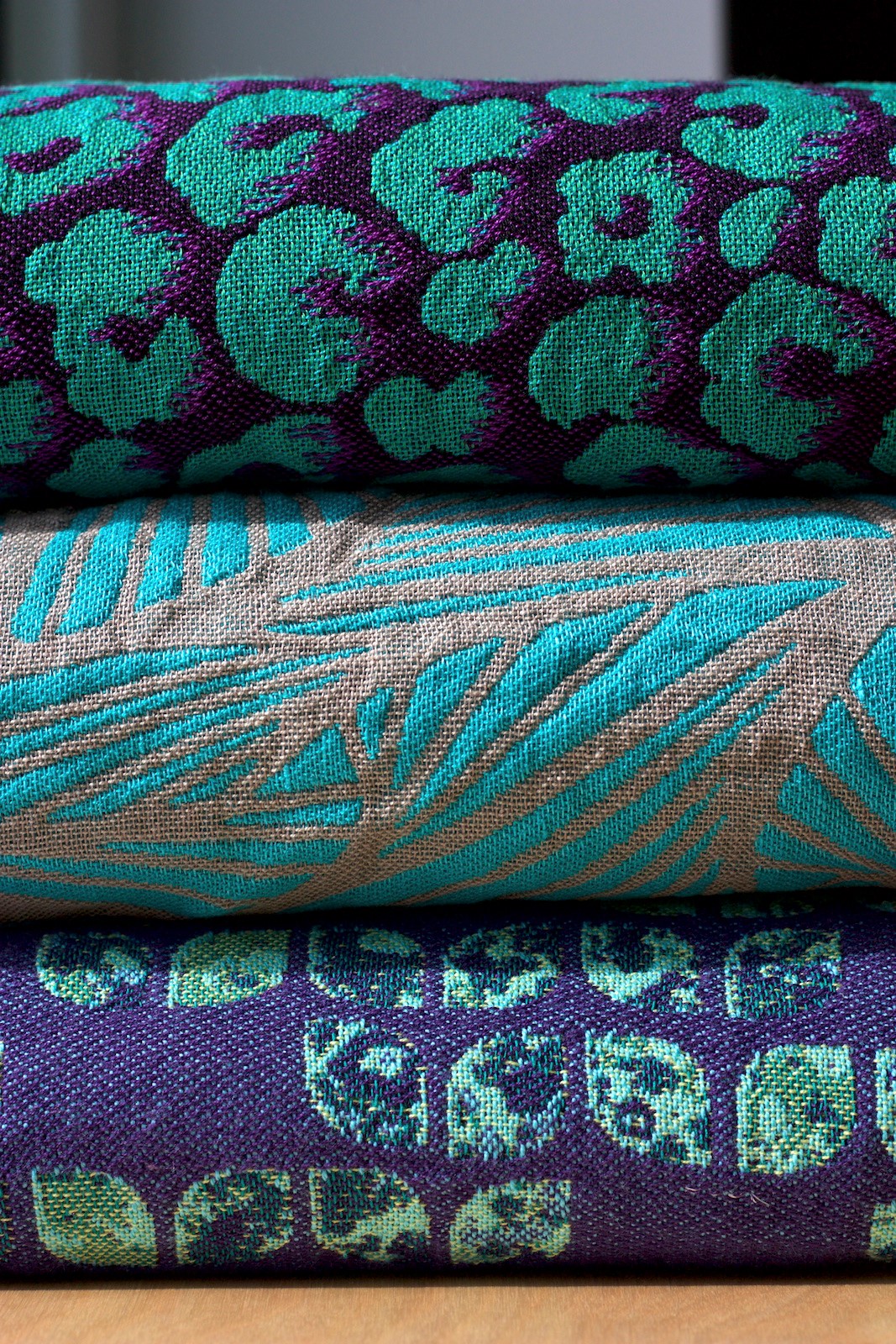
Duo weave is basically the regular weave with an extra weft: one warp, two wefts. It is relatively compact, being some patterns airier than others. It feels like an upgrade of the regular weave: stronger, cushier, more forgiving. It is very versatile! Thinner ones or with silkier, softer fibers can definitely be great even for newborns. The thicker ones are pleasant ruck wraps even for heavier babies, or even in multilayered carries.
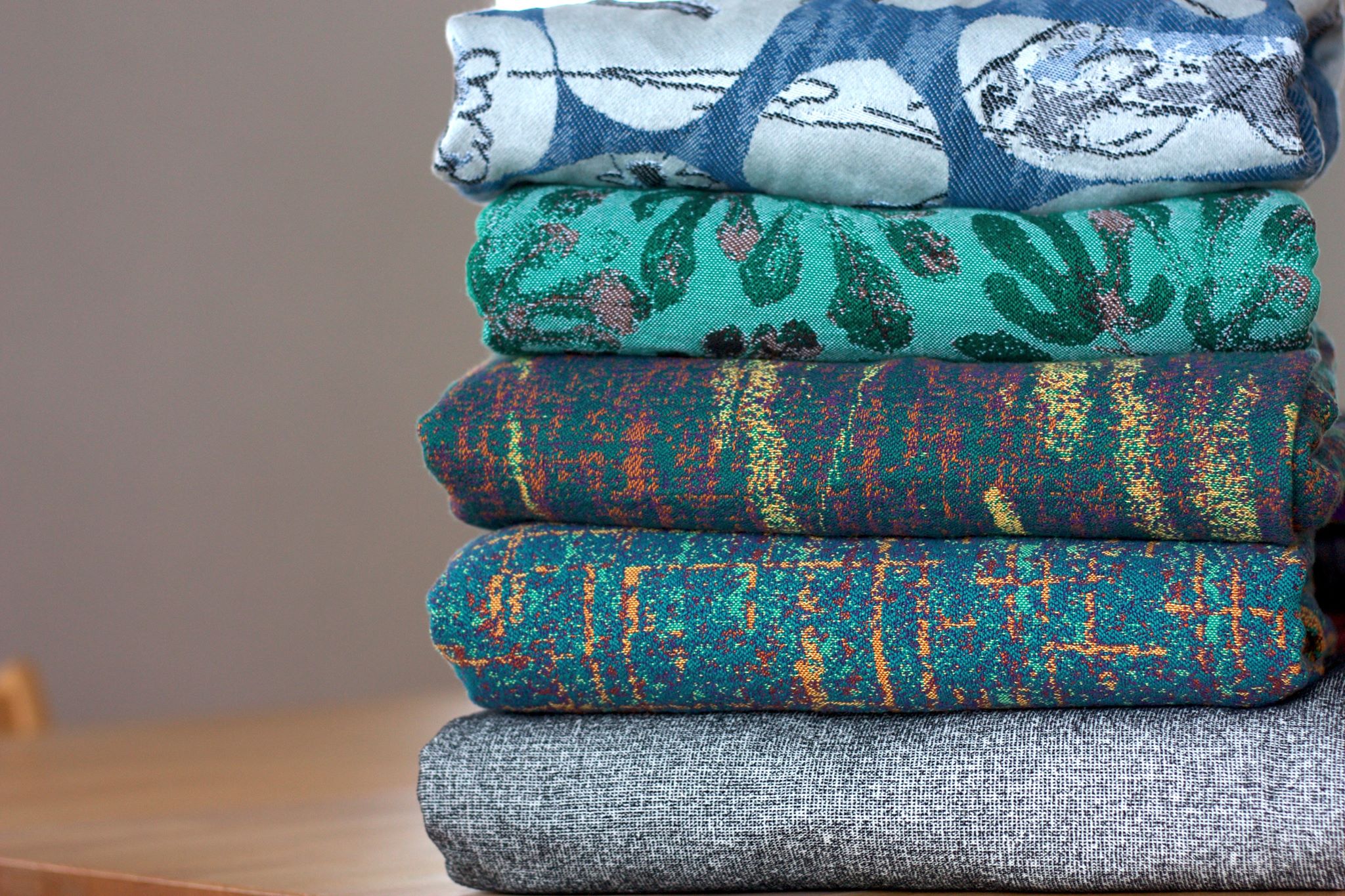
There are three more recent weaves that don’t have many releases yet and that I haven’t explored in many sizes, patterns and/or blends. One of them is the Trio weave with three wefts. It is a compact weave with lots of support! Reminds me of the Duo, but feels even stronger and steadier. Another one is the Trinity weave, an advanced kind of double cloth or an advanced kind of pocket weave. Trinity has two warps and two wefts that form tiny regularly distributed “air pockets” throughout the wrap. It is a bit bouncy with good stretch, airy and cushy! When you wrap with a Trinity and adjust it tight against you, the wrap slightly “hugs” you back, recoils. The third is the Waffle weave, that like its name suggests has an even 3D structure that results in spongy, fluffy and forgiving wraps.
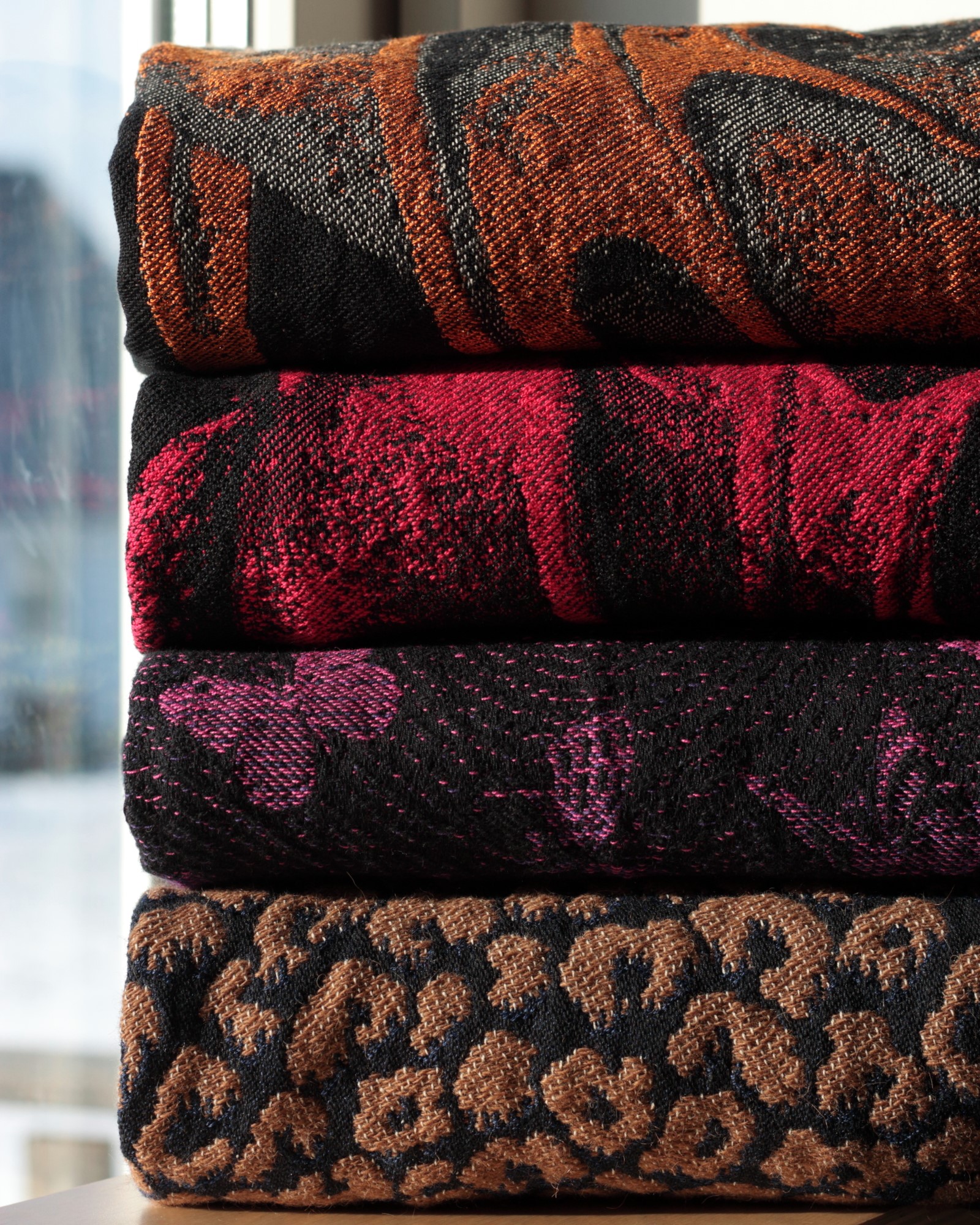
The Puffy weave’s most recognizable feature is its very thick weft thread. These are wraps with high grams per square meter (gsm) but don’t be fooled by those high numbers: in the right material blend, even a Puffy can carry a newborn cozily. These wraps tend to feel like clouds on your shoulders, they often forgive the most careless wrap jobs and most of them can be that ultimate companion you grab when you want the wrap to carry the weight of the child/children for you.
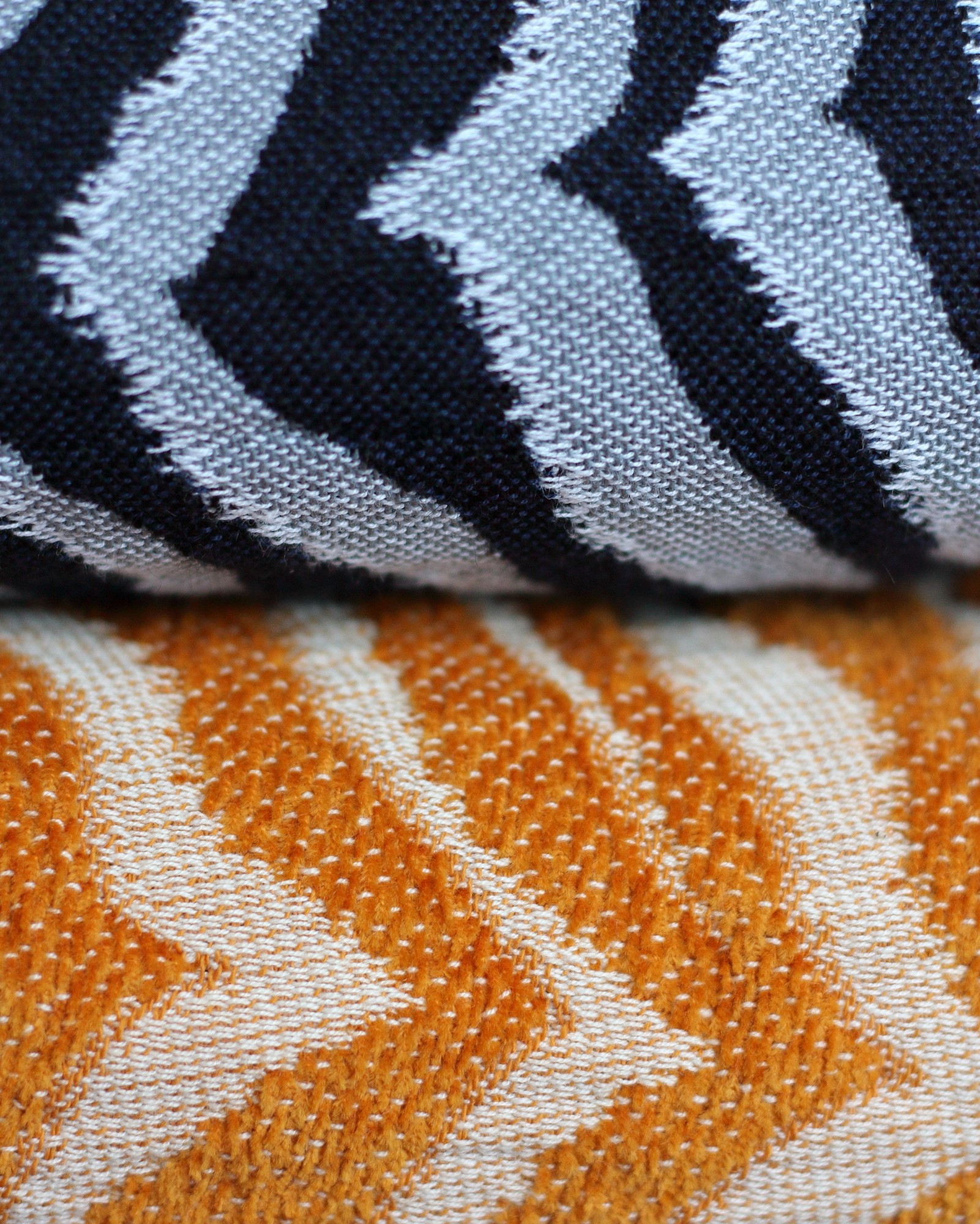
I can not say I have a favorite Yaro weave, honestly. They are all unique and all have a place in my babywearing heart. They suit different needs, different preferences, different moods, different stages of my journey. One weave combined with one fiber may provide a babywearing experience totally different from the same weave combined with another fiber. It is an exciting discovery every time!
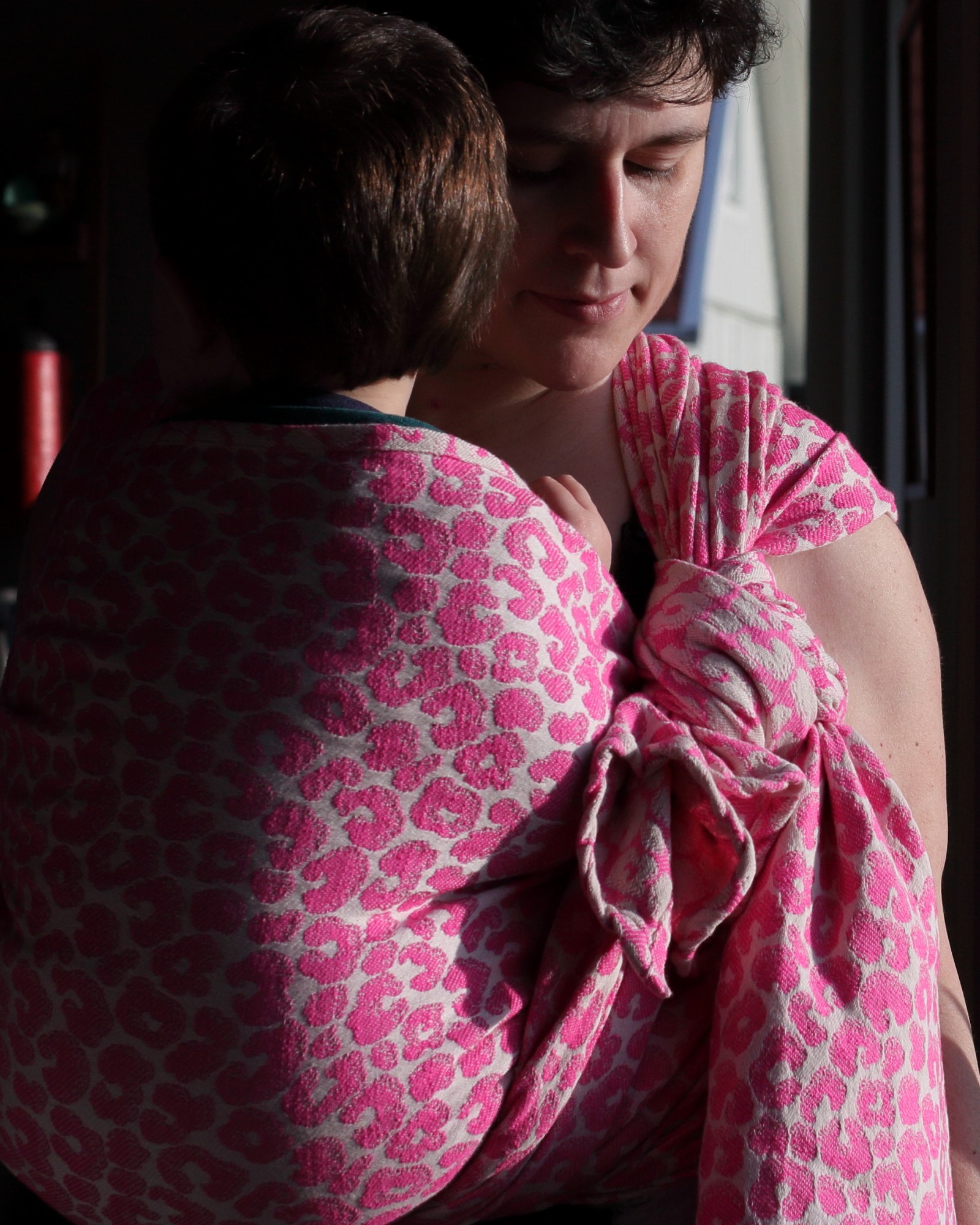
guest blog post written by Mariana Balreira